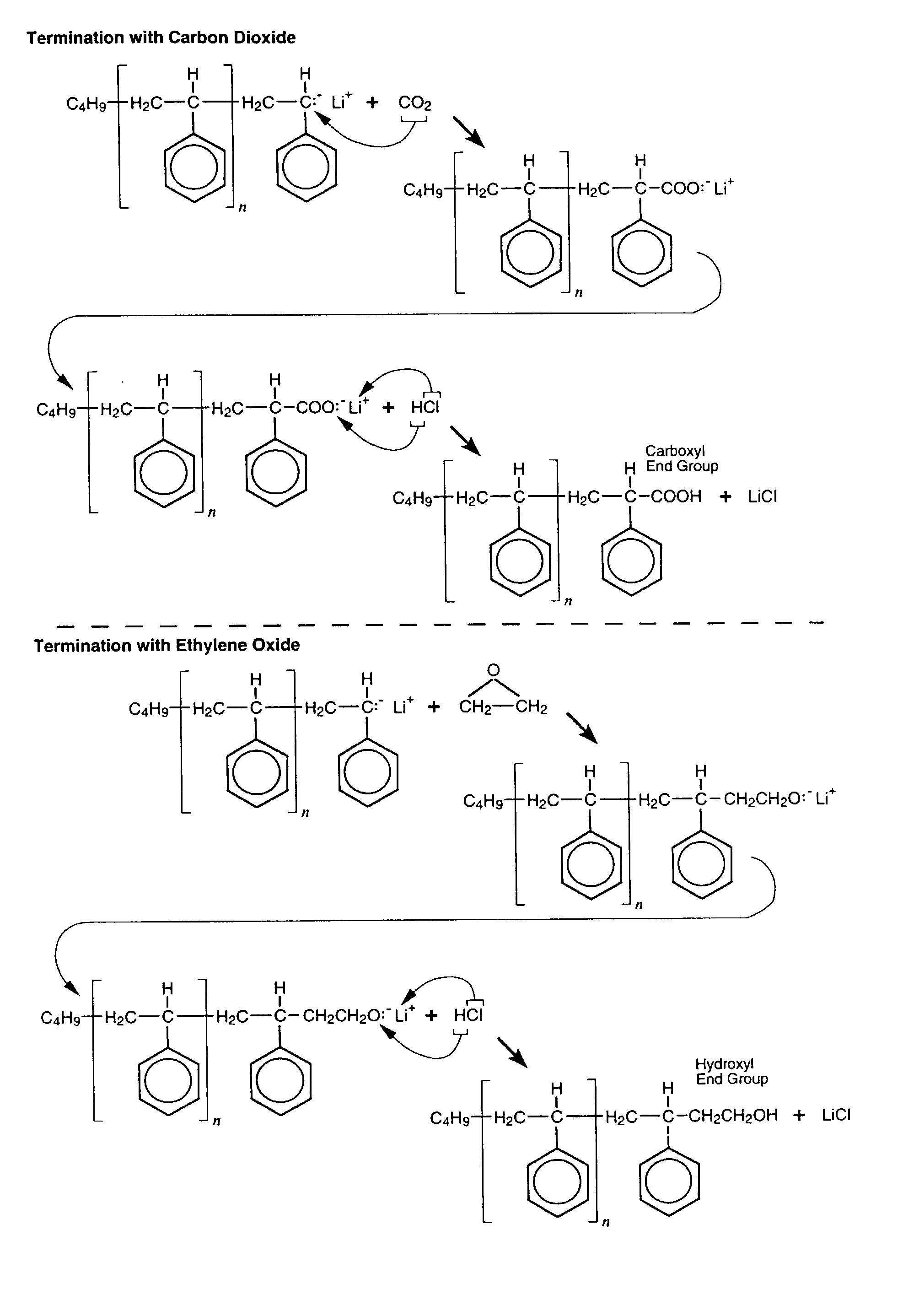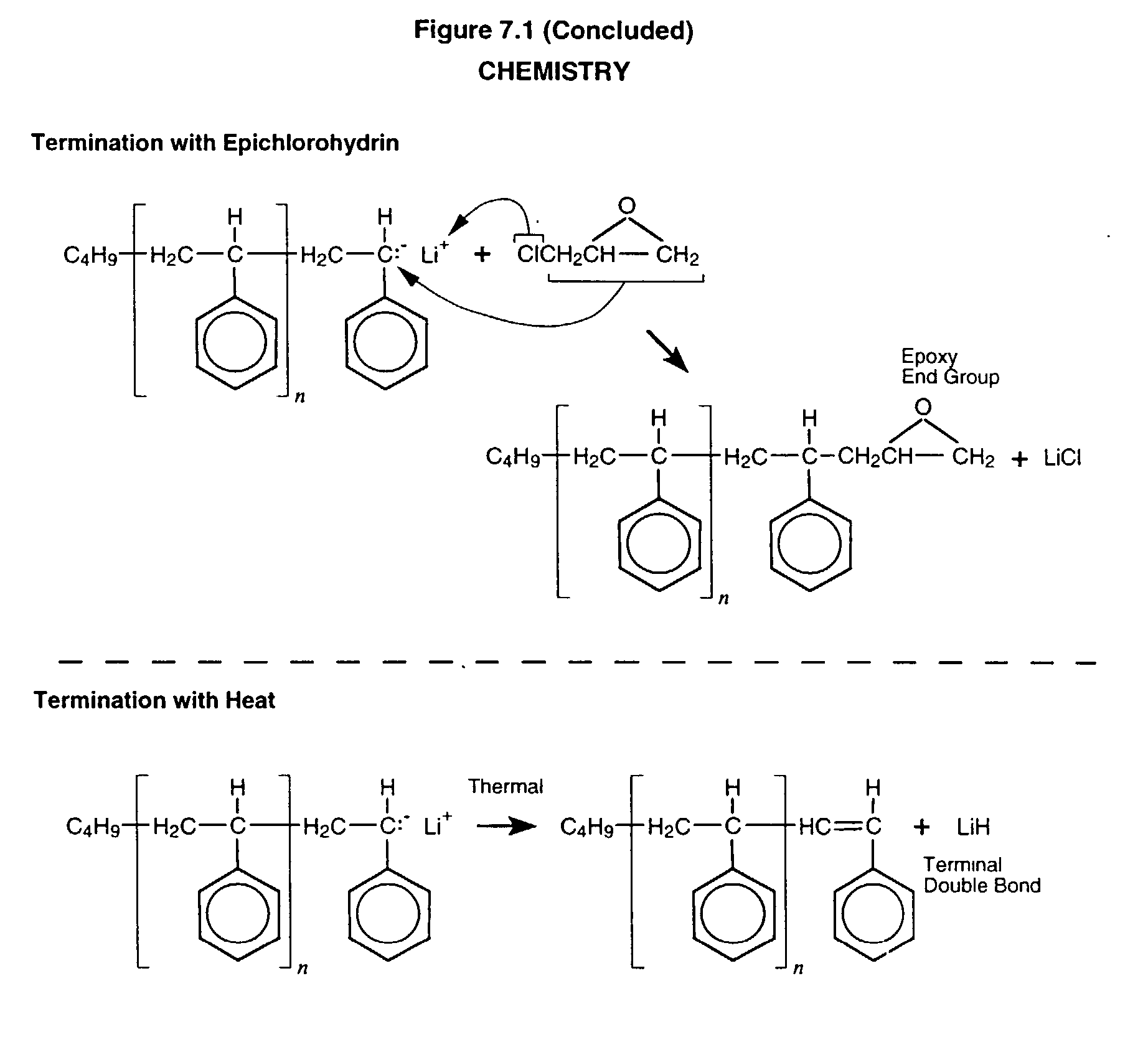Anionic process design for rapid polymerization of polystyrene without gel formation and product produced there from
a technology of anionic polymerization and polystyrene, which is applied in the field of anionic process design for rapid polymerization of polystyrene without gel formation and product produced there from, can solve the problems of anionic polymerization inhibiting the commercial development of polystyrene, gel formation, etc., and achieves the effects of slowing down anionic polymerization, slowing down this reaction, and short life span
- Summary
- Abstract
- Description
- Claims
- Application Information
AI Technical Summary
Benefits of technology
Problems solved by technology
Method used
Image
Examples
example 1
[0137] This example is based on the use of recycled polymer which acts as a heat sink to control the adiabatic temperature rise to the desired final temperature. The output of this plant is 30,041 lb of polystyrene per hour. All of the hourly stream flows are shown in table 7.3. The process flow diagram is shown in FIG. 7.10 and the process is shown as a block flow sheet in FIG. 7.11. The process consists of three sections:
[0138] Section 100 --Feed Preparation involving removal of all polar impurities
[0139] Section 200 --Adiabatic Polymerization to the desired finishing temperature
[0140] Section 300 --Finishing to produce polymer for both sale and for recycle
[0141] The basis for this example is shown in Table 7.2, which also shows the average characteristics of the product.
[0142] Section 100 --Feed Preparation
[0143] Styrene monomer is delivered by rail and stored in T-151. When received, it is inhibited with tertiarybutylcatechol (TBC) and is stored off-site at ambient temperature. ...
example 2
[0226] Example 1 is repeated except unterminated polymer is used as the recycle stream. This modification is found to broaden the molecular weight distribution slightly. This change reduces the size of vacuum devolatilizer (V-302) to one half and eliminates half of the large gear pumps (M-302A-D). The polystyrene product is essentially gel free.
example 3
[0227] Example 1 is repeated except the devolatilization is entirely eliminated. The product has a residue of less than 2000 ppm of ethylbenzene (which could be reduced by obtaining a lower ethylbenzene content grade of styrene monomer or switching to styrene produced by the oxidation process which coproduces propylene oxide and has no ethylbenzene residue). This change eliminates four major pieces of equipment (V-302, M-302A-D, E-301, and V-303). The polystyrene product is essentially gel free.
PUM
| Property | Measurement | Unit |
|---|---|---|
| diameter | aaaaa | aaaaa |
| diameter | aaaaa | aaaaa |
| wt % | aaaaa | aaaaa |
Abstract
Description
Claims
Application Information
 Login to View More
Login to View More - R&D
- Intellectual Property
- Life Sciences
- Materials
- Tech Scout
- Unparalleled Data Quality
- Higher Quality Content
- 60% Fewer Hallucinations
Browse by: Latest US Patents, China's latest patents, Technical Efficacy Thesaurus, Application Domain, Technology Topic, Popular Technical Reports.
© 2025 PatSnap. All rights reserved.Legal|Privacy policy|Modern Slavery Act Transparency Statement|Sitemap|About US| Contact US: help@patsnap.com



